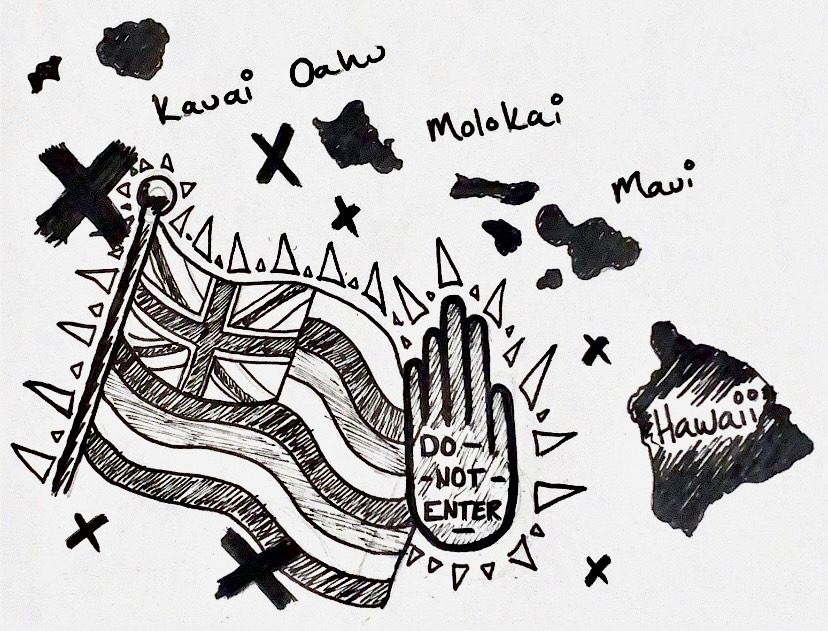With its sparkling water, swaying palm trees and exciting wildlife, Hawaii entices people from all over the world to vacation on its beaches. People flock to resorts and hotels, desperate for a place that will help them unwind. To the vacationers, Hawaii is a paradise, a utopia. But to the over one million people who live on the islands, Hawaii is a home with a rich history and culture that has been threatened since the first colonizers stepped foot on the land and one that continues to be threatened by the influx of tourists.
Tourism has resulted in the degradation of Hawaiian coral reefs, deforestation, the destruction of sacred land and pollution of their oceans. The Washington Post has even deemed Hawaii the “extinction capital of the world” as native species continue to die off — a process that began with Western missionaries and has continued through the expansion of the tourism industry.
The burden of tourism does not fall evenly. In 2021, when the Hawaii government asked residents to limit their water usage during a drought, resorts still functioned at full capacity, using up water to keep lawns green and spas functioning. Vacationers overcrowd beaches and drive up the prices of goods and housing. The travelers can sit in their resorts and enjoy their polished paradise. The locals must adapt and change their ways of life.
Some, however, claim that tourism is necessary to keep Hawaii afloat. The tourism industry makes up about 25% of the state’s economy. To limit travel to the island, some residents say, would only harm the lives of locals even more. Tourism accounts for approximately 200,000 jobs across the islands, and the creation of new hotels and resorts necessitates even more positions.
Residents who own restaurants and businesses in tourist-heavy areas depend on the revenue from the visitors to keep their businesses afloat.
While we cannot ignore the influence tourism has on Hawaii’s economy, we also cannot ignore that not all locals reap those benefits. Non-Hawaiians often own resorts; many locals often find themselves in service positions with much lower incomes and much less power.
Native Hawaiians comprise only approximately 21% of Hawaii’s population, yet account for roughly 20% of Hawaii’s unhoused population and have some of the highest poverty rates in the state. Whatever the economic benefits of tourism are, the native residents are not getting their fair share. Instead, they are faced with ever-increasing costs of living and desecration of sacred land. They watch as their homes and culture are taken, repackaged as utopia and sold to outsiders.
It may be impossible at this point to extricate tourism from Hawaii’s economy, but that doesn’t mean nothing can be done to soften its blow on the local people. Some Hawaiians have started tour companies focused on educating visitors on Hawaii’s colonial history, bringing to light the struggles that the locals face and have faced for centuries. Local farms and art studios open their doors to visitors, allowing travelers to experience local culture in ways that support the residents. Other, more touristy, businesses — such as snorkeling and scuba diving companies — have started to become increasingly environmentally-friendly in their practices to limit potential harm to the wildlife.
What is ultimately most important is listening to the Hawaiian people when it comes to issues regarding their land. Support local businesses instead of resort conglomerates, avoid littering or wasting large amounts of water and stay away from sacred and protected sites. The land is theirs: we are nothing more than temporary visitors. We should treat the land and people with the respect that they deserve.











